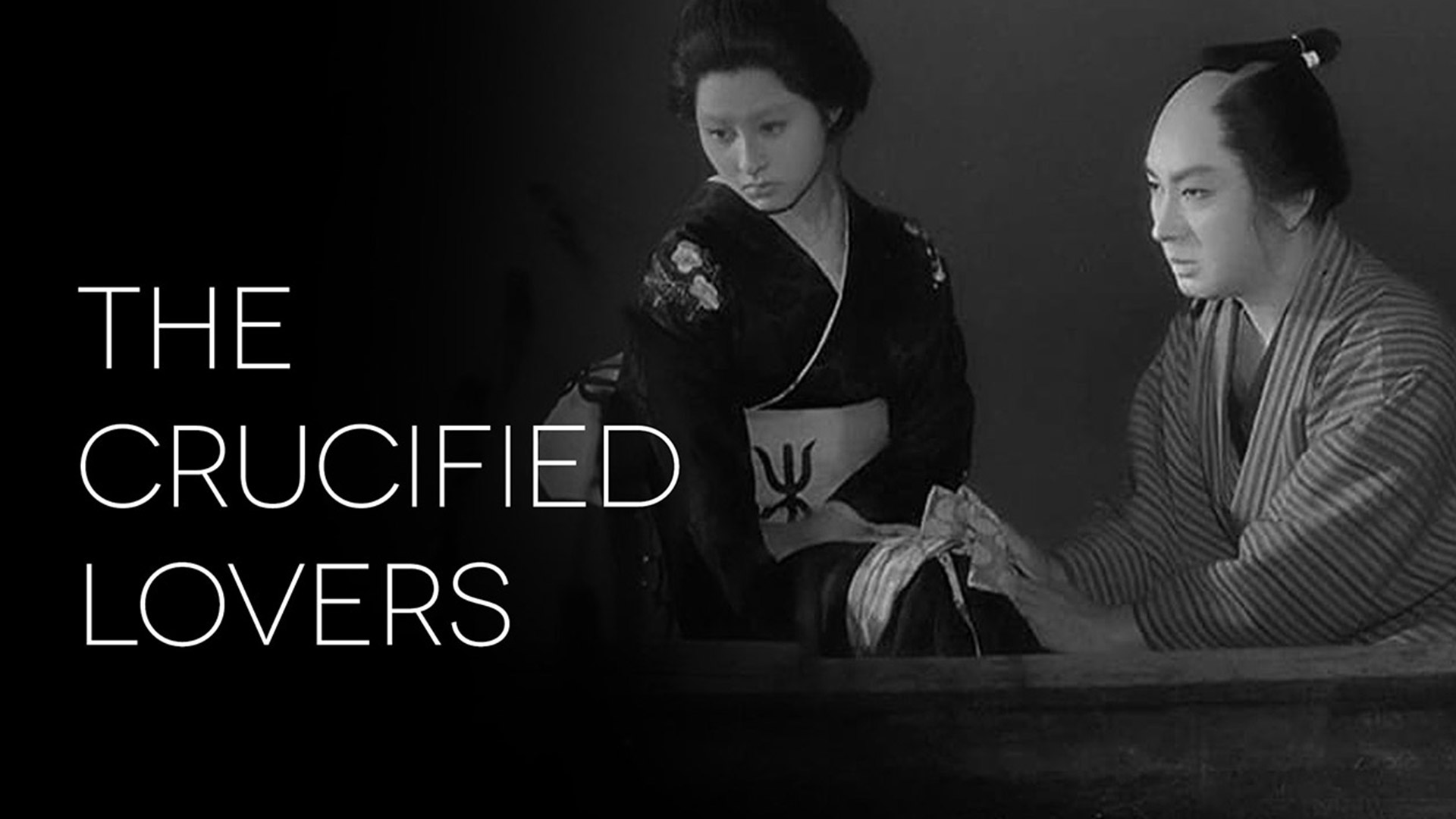
The Tale of the Crucified Lovers is a mesmerizing cinematic masterpiece that has captivated audiences since its release. This landmark Japanese movie, directed by Kenji Mizoguchi, tells a poignant tale of forbidden love and sacrifice in feudal Japan. The film beautifully portrays the tragic love story of a samurai and a lady-in-waiting, whose love is threatened by societal norms and hierarchical constraints. As one of Mizoguchi’s most celebrated works, The Tale of the Crucified Lovers showcases his exceptional storytelling skills and his ability to delve into the complexities of human emotions. In this article, we will delve into 41 fascinating facts about The Tale of the Crucified Lovers, shedding light on its production, its impact, and the legacy it has left behind in the realm of world cinema.
Key Takeaways:
- “The Tale of the Crucified Lovers” is a timeless Japanese movie set in 17th century Japan, exploring forbidden love, societal constraints, and the sacrifices people make for love.
- This classic film, based on a true story, captivates audiences with its emotional depth, stunning visuals, and exploration of universal themes like love and sacrifice.
Historical Setting
The movie “The Tale of the Crucified Lovers” is set in 17th century Japan, during the Edo period.
Based on a True Story
This gripping film is based on a real-life incident known as the “Sonezaki Shinj?” which occurred in Osaka in 1703.
Directed by Kenji Mizoguchi
The movie was directed by the legendary Japanese filmmaker Kenji Mizoguchi, known for his masterful storytelling and visually stunning cinematography.
Released in 1954
The Tale of the Crucified Lovers” was released in Japan in 1954 and received critical acclaim for its powerful narrative and artistic presentation.
Tragic Love Story
The movie revolves around the forbidden love between Mohei, a lowly servant, and Osan, the wife of his master. The couple faces numerous obstacles and ultimately make an extreme sacrifice for their love.
Poignant Symbolism
The film makes use of symbolism to depict the societal constraints and sacrifices faced by the characters. The crucifixion imagery signifies the crucifixion of their love in the face of societal norms.
Stunning Black and White Cinematography
The movie is shot entirely in black and white, emphasizing the contrasting emotions and the stark realities of the characters’ lives.
Distinguished Cast
The film features a talented cast, including Kazuo Hasegawa as Mohei and Ky?ko Kagawa as Osan, who bring depth and emotion to their respective roles.
Award-Winning Soundtrack
The movie’s hauntingly beautiful soundtrack, composed by Fumio Hayasaka, complements the narrative and enhances the emotional impact of the story.
International Recognition
“The Tale of the Crucified Lovers” was internationally acclaimed and won the Silver Lion at the Venice Film Festival in 1954.
Critical Acclaim
The film received widespread praise from critics for its compelling storyline, powerful performances, and artistic direction.
Cultural Significance
The movie is considered a classic in Japanese cinema and is often studied for its portrayal of love, sacrifice, and societal constraints.
Adaptation of Chikamatsu’s Play
The movie is an adaptation of the renowned Japanese playwright Chikamatsu Monzaemon’s play “The Love Suicides at Sonezaki” (Sonezaki Shinj?).
Exploration of Class Divide
The film delves into the rigid class structure of feudal Japan and the consequences of defying societal expectations.
Historical Accuracy
The movie meticulously recreates the historical setting, costumes, and customs of 17th century Japan, adding to its authenticity.
Universal Themes
Despite being set in a specific time period, the movie explores universal themes such as love, sacrifice, and the complexities of human relationships.
Influence on Filmmakers
“The Tale of the Crucified Lovers” has been highly influential, inspiring many filmmakers with its storytelling techniques and visual aesthetics.
Preservation by Criterion Collection
The film was preserved and included in the prestigious Criterion Collection, ensuring its legacy for future generations.
Emotionally Charged Performances
The actors’ performances in the movie are praised for their emotional depth and the ability to convey the characters’ inner turmoil.
Exploration of Forbidden Love
The Tale of the Crucified Lovers” portrays the tragic consequences of pursuing forbidden love, highlighting the societal pressures and moral dilemmas faced by the characters.
Intimate Love Story
Mohei and Osan’s love story is presented in an intimate and nuanced manner, capturing the complexities of their emotions.
Historical Accolades
The film received several Japanese Academy Awards, including Best Picture and Best Director, further cementing its status as a cinematic masterpiece.
Powerful Climax
The movie builds up to a heart-wrenching climax that showcases the extent of Mohei and Osan’s love for each other.
Visual Symbolism
The movie employs various visual symbols throughout the narrative to convey the characters’ emotions and emphasize key themes.
Innovative Storytelling Techniques
Kenji Mizoguchi utilized innovative storytelling techniques, such as long takes and fluid camera movements, to enhance the audience’s immersion in the story.
Exploration of Feminine Identity
The film delves into the exploration of feminine identity and the constraints imposed on women in feudal Japan.
Empathy for Characters
The movie succeeds in establishing a deep emotional connection between the audience and the characters, evoking empathy and understanding.
Contemplation of Love and Duty
“The Tale of the Crucified Lovers” raises profound questions about the nature of love, duty, and the sacrifices people are willing to make for their beliefs.
Timeless Cinematic Experience
Even after decades, the movie continues to captivate audiences with its timeless narrative and artistic vision.
Preservation of Japanese Cultural Heritage
The film plays an essential role in preserving the cultural heritage of Japan and showcasing its rich history to a global audience.
Limited Dialogue
The movie relies heavily on visual storytelling, using minimal dialogue to communicate the characters’ emotions and inner struggles.
Ongoing Influence
The Tale of the Crucified Lovers” continues to exert its influence on contemporary filmmakers, inspiring them to explore similar themes and storytelling techniques.
Emotional Resonance
The movie’s emotionally charged moments leave a lasting impact on viewers, evoking a range of emotions throughout the narrative.
Ethical Dilemmas
The film presents the characters with ethical dilemmas, forcing them to make heartbreaking choices that shape the course of their lives.
Examination of Honor and Integrity
The Tale of the Crucified Lovers” delves into profound questions of honor and integrity, challenging societal expectations and norms.
Visual Metaphors
The film employs visual metaphors to convey the characters’ internal struggles and the conflicts they face in their pursuit of love.
Cultural Sensitivity
The movie handles cultural and historical subjects with sensitivity, offering a nuanced portrayal of Japanese traditions and societal dynamics.
Ethereal Aesthetics
The cinematography and visual design of the movie create an ethereal and poetic atmosphere that adds to the overall impact of the storytelling.
Cross-Cultural Exploration
“The Tale of the Crucified Lovers” offers an opportunity for cross-cultural exploration, bridging the gap between Eastern and Western storytelling perspectives.
Emotional Catharsis
The movie provides a deeply cathartic experience for viewers, eliciting a range of emotions and leaving a lasting impression.
Enduring Legacy
“The Tale of the Crucified Lovers” continues to be celebrated as a masterpiece of Japanese cinema, with its profound exploration of love, sacrifice, and societal constraints.
Conclusion
In conclusion, The Tale of the Crucified Lovers is an emotionally captivating film that explores the depth of love and sacrifice. With its rich historical backdrop, stunning cinematography, and heartfelt performances, the movie leaves a lasting impact on viewers. From its tragic storyline to its beautifully crafted visuals, this film offers a unique and engrossing cinematic experience. Whether you’re a fan of Japanese cinema or simply appreciate compelling narratives, The Tale of the Crucified Lovers is a must-watch movie that will transport you to a different time and evoke a range of emotions.
FAQs
1. What is the story of The Tale of the Crucified Lovers?
The Tale of the Crucified Lovers is based on a true historical event known as the K?ga Clan Incident, which took place in 17th century Japan. The story revolves around the forbidden love between Jihei, a paper merchant, and Koharu, a courtesan. They face numerous challenges and obstacles as they try to pursue a life together.
2. Is The Tale of the Crucified Lovers a romantic film?
Yes, the movie is primarily a romantic drama that explores the themes of love, sacrifice, and societal constraints. It beautifully portrays the complexities of relationships and the lengths people are willing to go for love.
3. Can I watch The Tale of the Crucified Lovers with my family?
Although the film does contain some intense and dramatic moments, it can be considered suitable for older children and adults. It is important to note that there are themes of tragedy and sacrifice that may require parental guidance.
4. Is The Tale of the Crucified Lovers available with English subtitles?
Yes, the film has been released with English subtitles for international audiences to enjoy. This allows viewers who are not fluent in Japanese to fully appreciate the story and performances.
5. Is The Tale of the Crucified Lovers a well-known film?
While it may not be as widely known as some other movies, The Tale of the Crucified Lovers is highly regarded in the realm of Japanese cinema. It has garnered critical acclaim for its storytelling, visuals, and performances, earning its place as a classic in its genre.
Was this page helpful?
Our commitment to delivering trustworthy and engaging content is at the heart of what we do. Each fact on our site is contributed by real users like you, bringing a wealth of diverse insights and information. To ensure the highest standards of accuracy and reliability, our dedicated editors meticulously review each submission. This process guarantees that the facts we share are not only fascinating but also credible. Trust in our commitment to quality and authenticity as you explore and learn with us.


